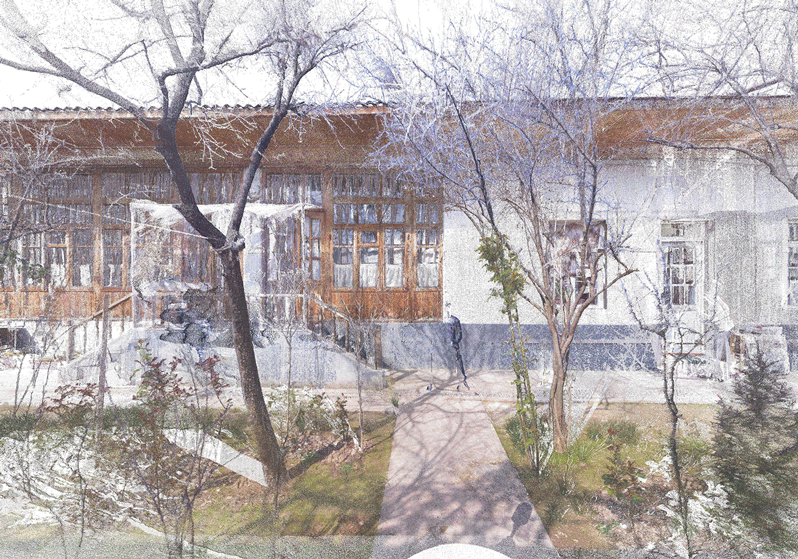May 22–November 21, 2021
Quarta Tesa
Arsenale, Castello
30122 Venice Italy
Italy
The Republic of Uzbekistan participates for the first time at the International Venice Architecture Biennale with the exhibition Mahalla: Urban Rural Living curated by Emanuel Christ and Christoph Gantenbein, professors of architecture and design at ETH Zurich, and founding partners of Christ & Gantenbein, and featuring works by Spanish filmmaker Carlos Casas, Dutch photographer Bas Princen, and the CCA Lab Tashkent.
The project is commissioned by the Art and Culture Development Foundation under the Ministry of Culture of the Republic of Uzbekistan and its Executive Director Gayane Umerova, with the special support of Saida Mirziyoyeva, Deputy Chairman of the Council of the Art and Culture Development Foundation under the Ministry of Culture of the Republic of Uzbekistan and Aziz Abdukhakimov, Deputy Prime Minister of the Republic of Uzbekistan, Minister of Tourism and Sports, and Chairman of the National Commission of the Republic of Uzbekistan for UNESCO.
The exhibition addresses the theme of the 2021 Venice Biennale, “How will we live together?” by researching an important aspect of cultural heritage and an ancient and contemporary form of “living together”: the mahalla. The Arabic word “mahalla” has various meanings in Uzbekistan: a traditional neighborhood and a form of organization of community life; a Soviet and a modern institution of power, and a place where the state and society meet at the local level.
There are currently over 9,000 mahallas in Uzbekistan, each with 150 to 9,000 inhabitants. Due to serious economic pressure, changing habits, and their lack of modern infrastructure, they are slowly being replaced by new forms of housing, even though they remain popular among people seeking an urban-rural lifestyle. At a time when the ecosystem of the anonymous megacity is literally reaching its limits, the need for alternatives is greater than ever. Can the social organization of these neighborhoods and their various architectural formations as low-rise/high-density structures offer urban society a sustainable and ecological model? The exhibition offers a scientific investigation and an artistic statement that aims at a critical reading and a tentative exploration of this topic.
The starting point is the research and documentation led by professors of architecture and design at ETH Zurich Emanuel Christ and Christoph Gantenbein, together with Adjunct Curator and Head of Research Victoria Easton. A crucial part of the research took place in Tashkent where the ETH Zurich team closely collaborated with local advisors like Professor Abdumannop Ziyayev, Professor Shukur Askarov, Professor Mavlyuda Yusupova, Professor Boris Chukhovich, students, and the CCA Lab, a research laboratory of the Center for Contemporary Art in Tashkent. This research resulted in various documents being compiled in a special edition published by Humboldt Books.
Within the Quarta Tesa, the exhibition provides three different types of appropriation expressed in a 1:1 scale: a model of a mahalla house occupying the whole venue; an invisible appropriation with sounds from the mahallas transmitted through ambisonic technology recorded by Carlos Casas; extracts of mahallas as fragments of spaces represented in photographs by Bas Princen. Furthermore, students of the CCA Lab, under the guidance of Uzbek artist Saodat Ismailova, were involved in the creation of a furniture piece for the exhibition: a tapchan, an emblematic item of Uzbek culture so vital to gatherings in any courtyard house. CCA Lab participant Munis Juraeva, created a contemporary interpretation of traditional embroideries, which was executed by designer Madina Kasimabeva. As a whole, this installation is an open-ended three-dimensional collage that invites us to consider new possibilities of “living together”. Finally, an app developed from point cloud models of real houses will allow the visitor to experience the house structure suggested by the soundscapes.
For more information about the opening’s livestream closer to the date, visit www.e-flux.com/video/.
MAY – Communication & Events
Claudia Malfitano: claudia [at] mayvenice.com
Download the presskit


